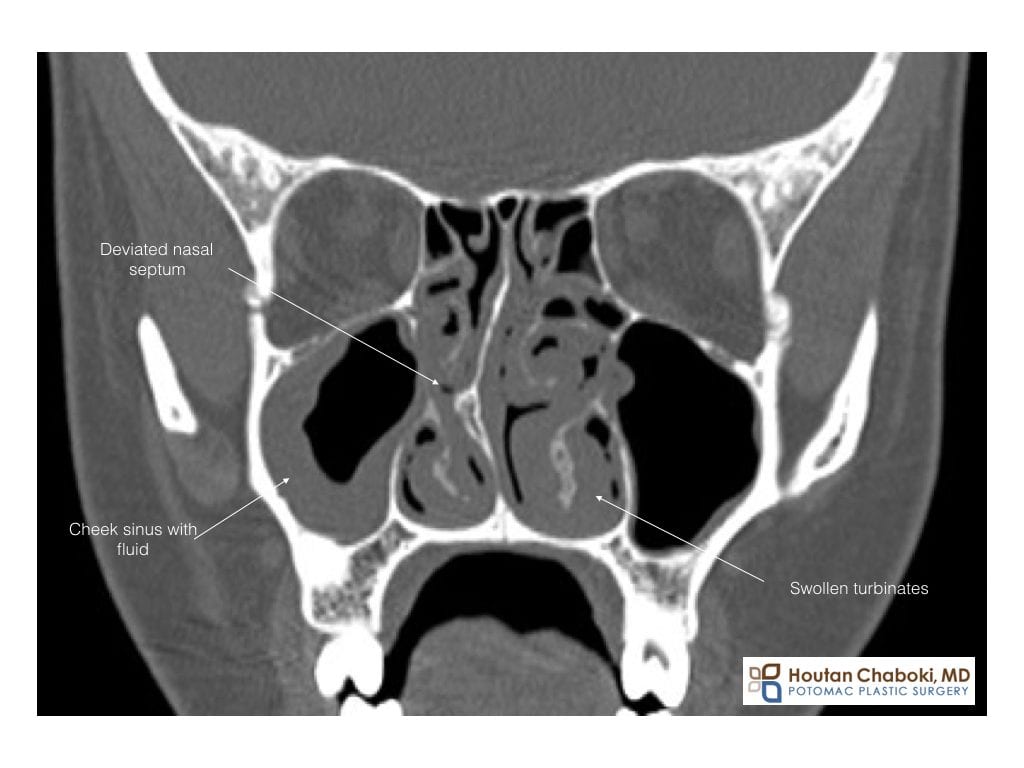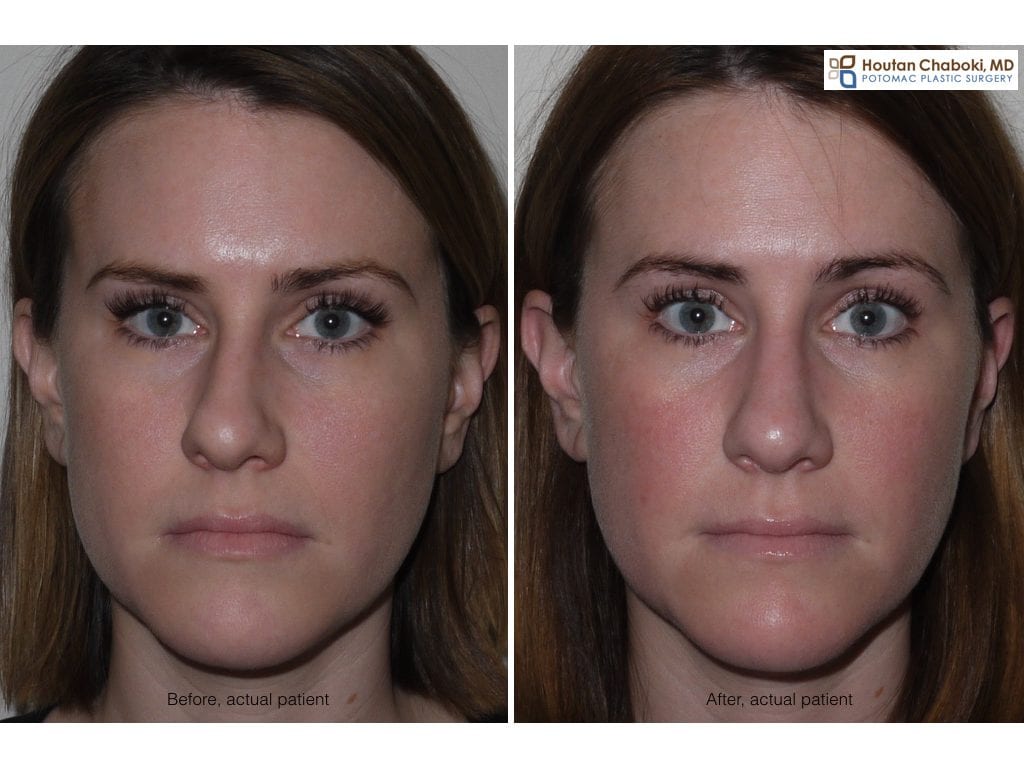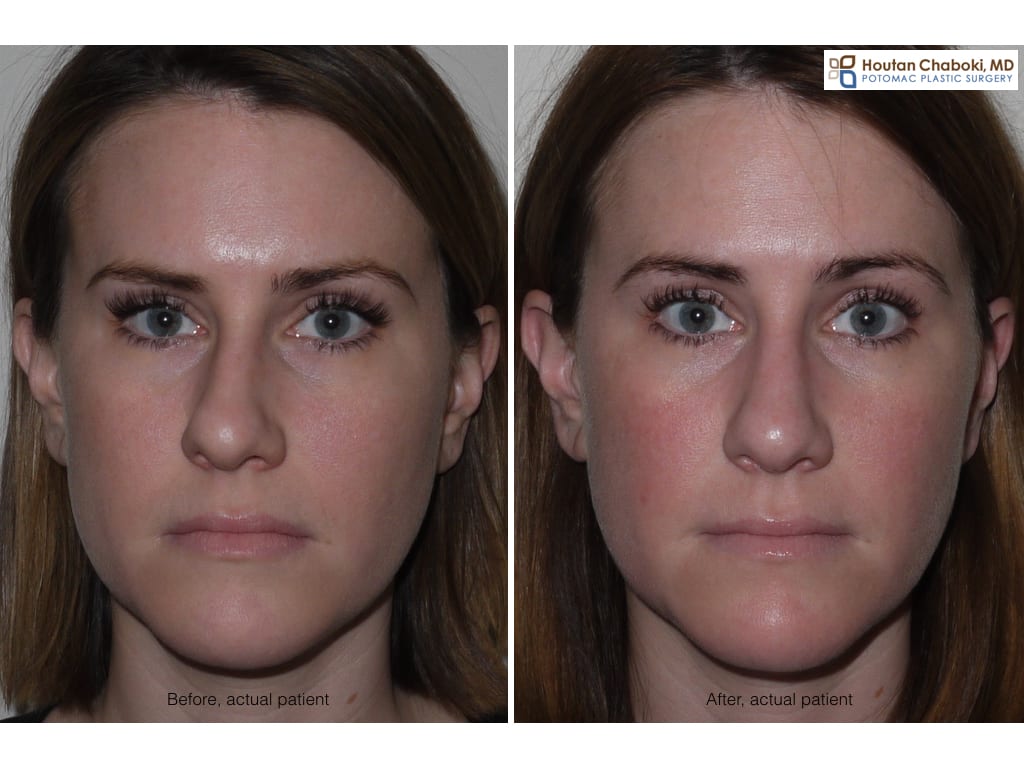It’s spring and allergy season has started in Washington DC. Flowers are blooming with increasing pollen and allergies in the air. As a result of seasonal changes, patients are coming to their allergist for help finding relief.
Some of these allergy patients are then referred to or seek sinus surgeons to perform sinus surgery, when medications do not improve their chronic sinus symptoms of nasal congestion or blockage. Sinus surgery, however, is usually not required for these patients. Rather, septoplasty with turbinate reduction is the more commonly performed procedure to relieve chronic nasal allergies for appropriate patients when medical treatment is inadequate.
Anatomically, a deviated septum and enlarged turbinates contribute much more to nasal allergy symptoms than the actual nasal sinuses. Actual sinus surgery can provide allergy relief for those patients with nasal polyps or a chronic sinus infection. However, statistically a deviated septum is much more common than nasal polyps and chronic sinusitis, so many more patients feel better with just septoplasty and turbinate reduction rather than opening the true nasal sinuses.
What are the nasal sinuses?
The nasal sinuses are spaces of air inside the facial bones. The major sinuses are in the forehead, cheek bones, between the eyes, and behind the eyes. The sinuses, along with other nasal structures, contribute to the function of the nose, which is to help humidify, clean, smell, and warm the air.
This photograph is a CT scan of the nose and sinuses. This patient has a deviated septum, swollen and blocked sinuses with polyps, and enlarged turbinates. For surgical treatment, this patient may consider turbinate reduction and sinus surgery, in addition to septoplasty and rhinoplasty surgery, as they would benefit from comprehensive nasal and sinus surgery.

What is a deviated septum?
The nasal septum is bone and cartilage inside the nose that divides the nose into right and left sides. The cartilage is more in front toward the tip of the nose, while the bone is much deeper inside the nose. The septum is very commonly deviated or twisted, either congenitally or from prior trauma. Plastic surgeons often see a deviated septum in their rhinoplasty patients.
Below is a video of a deviated septum before rhinoplasty surgery. The endoscopic camera is placed first on the right and then left side of the nasal cavity. The video camera shows blockage on both sides from the deviated septum in this patient. There is almost too little space for the small camera itself. This particular patient did not have swollen or enlarged turbinates. Some plastic surgeons or rhinoplasty specialists may examine the inside the nose with a small camera, although it’s not always required before rhinoplasty.
What is septoplasty?
Septoplasty (surgery for a deviated septum) is a very common procedure worldwide, which may be performed by plastic surgeons, facial plastic surgeons, and otolaryngologists. This nasal surgery improves nasal breathing and reduces symptoms of allergies or chronic sinusitis by increasing the space inside the nose. Septoplasty is frequently combined with turbinate reduction to maximize airflow in the nose.
Septoplasty increases the space inside the nose which then improves chronic sinus or allergy symptoms of congestion or blockage. Septoplasty alone does not change the appearance of the nose for most patients, unless combined with some type of rhinoplasty.
Is septoplasty always performed with rhinoplasty?
Rhinoplasty is not one operation, but rather many potential operations to reshape the nose. Septoplasty is commonly performed at the same time as rhinoplasty, but not always required. Septoplasty not only can improve one’s breathing and sinus symptoms, but your plastic surgeon may use the cartilage removed during septoplasty for the rhinoplasty procedure as part of the nose reshaping.
The top photograph is a patient who has a deviated septum and deviated nose, who required a septoplasty with rhinoplasty to improve her nasal allergy symptoms. She underwent a closed rhinoplasty, septoplasty, and turbinate reduction. The rhinoplasty portion of the procedure helped reduce a nasal bump and improve nasal symmetry with nasal bone contouring and cartilage grafts.
Plastic surgeons can improve chronic sinus symptoms with rhinoplasty surgery. – Houtan Chaboki, MD
Only after a comprehensive evaluation by a rhinoplasty surgeon or nasal specialist can he/she help determine appropriate options for you. A CT scan or endoscopic video examination of the nose may be part of the consultation rhinoplasty process.
Have you considered sinus surgery, septoplasty, or rhinoplasty? If so, what questions do you have?



Interested septoplasty
Septoplasty surgery alone may not require an external cast, unless combined with rhinoplasty.
Do you think these both surgeries can be done together? What would be the recovery time?
Thanks you for reading the blog.
Septoplasty, sinus surgery, and rhinoplasty may be performed together at the same surgical setting. However, each patient is unique and circumstances will vary based on the needs and preferences of each patient and plastic surgeon. Recovery time is typically similar. Rhinoplasty patients should review potential options with their surgeon.
Best,
Dr. Chaboki